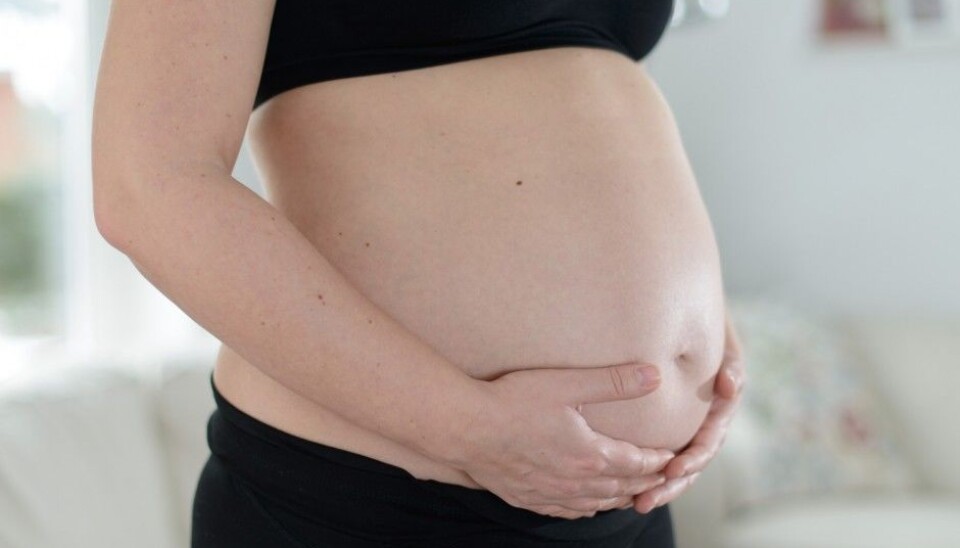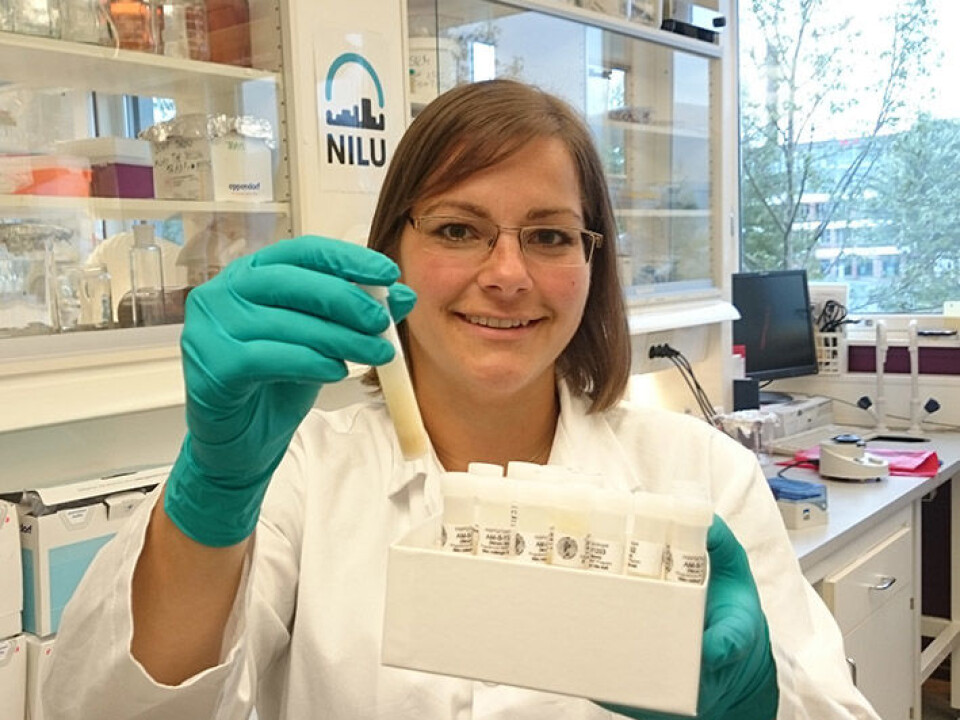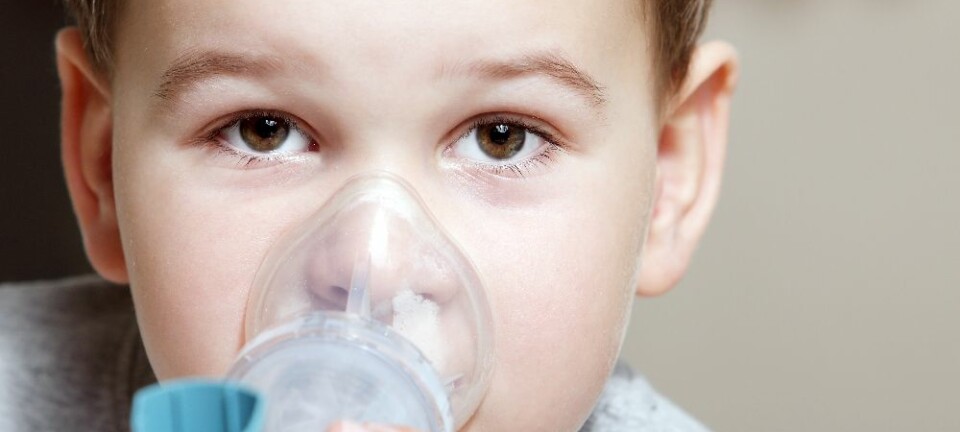This article was produced and financed by NILU - Norwegian Institute for Air Research

How much PCB does your body contain?
The human body contains many contaminants. A new research project shows that data models can replicate measurements of PCB concentrations in individuals, and thus help scientists understand what happens with these contaminants in our bodies.
Denne artikkelen er over ti år gammel og kan inneholde utdatert informasjon.
Environmental contaminants are used in many different contexts - from manufacturing to consumer products. They end up in the environment and are transported through water, air and wildlife. These days, legacy contaminants, i.e. regulated substances that are no longer in production but still found in the environment, mainly affect Norwegians through the food we eat.
The understanding of these processes have previously been described in data models, but scientists at NILU – Norwegian Institute for Air Research and UiT – The Arctic University of Norway recently came up with something totally new. They have for the first time attempted to use a mechanistic model to estimate the presence of contaminants in the body of individuals.
Modeling toxins in different stages of life
– The project’s background is a data model that simulates the environmental contaminant PCBs – polychlorinated biphenyls – from emissions via the environment and into humans, says postdoctoral Therese Haugdahl Nøst at NILU, who is responsible for the implementation of the study.
(See earlier article on forskning.no: http://forskning.no/forurensning-miljogifter/2010/03/jakten-pa-morgendagens-miljogifter)
The new project uses measurements of PCBs in Norwegian women who participated in the studies "The Northern Norway Mother-and-Child Contaminant Cohort (MISA)" and "Women and Cancer." The former study include pregnant women in Northern Norway, the latter including postmenopausal women from all over Norway.

– For the first time, we have been able to compare the model-estimated concentrations in individuals with each individual's actual measurements, Nøst says.
– When the simulation model is provided with information from the women's questionnaire – about birth, dietary habits, childbirth and breastfeeding – it returns the PCB concentrations we can expect to find in each individual, she continues.
Comparing model and reality
Such an exercise, with this type of modelling, has never been done before.
– We want to explore whether the model gives reasonable results, says senior scientist Knut Breivik from NILU. He is responsible for the simulation tool, developed in close collaboration with researchers from Stockholm and Toronto. – We would like to understand the links between the sources of pollutants and how people and the environment are exposed to these, so it is important to do reality checks by confronting the model with observations, he explains further.
The researchers have now compared the model's estimated blood concentrations with the real values measured in the women's blood samples. The model estimate hit the correct concentration range, and also manages to roughly distinguish between individuals.
Takes lifestyle into account
Past experiments based on statistics alone have previously shown good estimates for PCB concentrations in humans. But the impressive difference is that this model study is based on how changes in emissions of PCBs affect the levels of different people while accounting for lifestyle factors of each individual.
– Statistical analysis can’t necessarily identify the source of exposure directly, and in some cases there are underlying factors. For example, a statistical relationship between education and levels of PCBs in the body does not mean that PCBs end up in humans by reading books, explains Nøst. – The type of model we work with are fundamentally different from statistical approaches, as it is mechanistically oriented. It means that we try to use the model to describe and explain how molecules migrate, from the moment they are produced and until they end up in the human body of an individual.
– Such exercises are important in testing whether the model calculations are realistic, compared with actual measurements. Earlier, we found that comparisons between the model and measurements coincide for other animals and sample materials, but now we have shown that the models' estimates also concur with blood samples from individual persons, continues Nøst.
She points out that an equally important outcome of this analysis is to identify deficiencies in the model. – For some individuals, we need to take into account the intake of seagull's eggs, because women eating seagull's eggs have higher levels of pollutants in their bodies than what the model suggests.
Going back in time
While any model simplifies reality, this model is largely capable of reproducing how changes in emissions affect exposure of the environmental contaminant PCB, down to the individual level. The model has in fact not only estimated contaminant concentrations at the time the blood sample was taken, but all the way back to when each woman was born.
Associate professor and scientist Torkjel Sandanger at NILU and UiT believe these findings have great potential, since the model is able to take into account important factors such as age and number of childbirths. He thinks it is particularly important that the model can estimate a person’s contaminant levels dating back in time.
– It is difficult to evaluate exposure based on a single blood sample, so the model can assist scientists by estimating past exposure, he says. – The fact that the model and measurements correspond that well is therefore of great value.
Gives answers about the past – and the future
Understanding how concentrations change in each person is important, Nøst believes. It means that the model can be used to address a variety of questions, including;
- How long will it take different people to get rid of the PCBs in their bodies?
- How much PCB will one person (with his birth, diet, residence etc.) have ingested so far?
- How quickly can further emission reductions be expected to affect a person's PCB levels?
- How will a change of diet over time mean/could have meant for a person’s PCB levels?
- How will changes in both emissions and lifestyle affect the amount of PCB in a person?
- Could a person previously have been exposed to contaminant levels that may have posed a possible health risk, i.e. in a more critical period of life (as a fetus, child, teen, etc.)?
– There is great potential in being able to use models to predict contaminant concentrations, concludes Nøst. – It may provide a better measure of human internal exposure over time, without having to rely on blood samples only. Hopefully, we will also be able to develop and use models for additional contaminants in the future.
-------------------------------------
Read the Norwegian version of this article at forskning.no



































